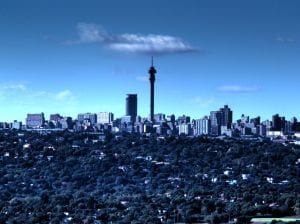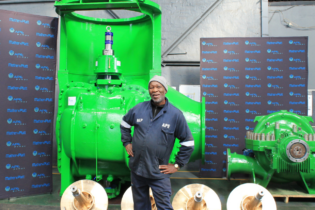The 2013 Global Green Building Convention recently gathered in Cape Town to shed light on the latest innovations in sustainable building techniques, however, it has become paramount that an assembly of , green buildings alone will not be the only deciding factor in green city developments, says WSP Group Africa.
Co-hosted by the Green Building Council South Africa (GBCSA) and the World Green Building Council (WGBC), the convention brought together the smartest minds and leading industry players from around the world, to demonstrate new innovations, share insights and collaborate on what the future of sustainable building will look like. As with any discussion linked to going green, sustainability or adapting to climate change, we are reminded of the South African Government’s remarkable commitment to carbon reduction targets of 34% from 2010 levels by 2020. Eric Noir, Director for WSP GREEN by DESIGN, shares his thoughts on the future trends in sustainable building that will come into play in the coming years if we are to reach this target. According to Noir, “The carbon reduction timeframe unfortunately does not allow for substantial improvements in the country’s energy mix, which is still primarily coal based and carbon intensive. We also have to realise that the urban form will not rapidly and materially transform itself towards more efficient and compact cities – which is a serious ambition and may take the better part of 20 to 30 years to achieve. A green city is a complex undertaking for any economy – whether developed or emerging.” The complexities to developing greener cities in South Africa is further exacerbated by constraints of inadequate infrastructure and the primary economic focus – in public and private sectors alike – on job creation and economic survival, over energy efficiency’s capital intensive measures. In this landscape, the built environment will be under renewed pressure to accomplish energy efficiencies of close to 30% across the entire built stock. “Considering that new building projects possibly represent about 5% of the entire built stock from 2010, to reach this target, means we will have to take severe measures to refurbish the existing built stock with green principles – keeping energy efficiency top of mind.”Closely linked to the refurbishment of existing buildings is the issue of productivity and space planning – particularly for office buildings. Noir explains, “In our own offices, we have experienced the advantages of adopting a more open-plan floor plate, in that we reclaimed upward of 30% of our space, reduced costs and benefitted from improvements in natural light, air movement and ventilation. The ability to do all this has to be a very appealing strategy, which I expect will mature tremendously locally within a few years from now.”
The inclusion of renewable energies and biological processes in passive designs will also be a big trend in the coming years. Uses of solar energy, for instance, are becoming more understood. Any design solution that does not require carbon intensive ‘brute force’ is now being investigated alongside more conventional systems. “The integration of the built form and the architectural language is paramount to cost effective and harmonious resolution of earnest design and can only be achieved through trans-disciplinary approaches to design,” continues Noir. “Boundaries between the various professions are truly being blurred. As a result, we are seeing incredible synergies between more skilled designers, with depth of experience, and the young professionals coming up in the ranks, who are able to think more laterally and within a broader spectrum of disciplines. This is possibly also because with the advent of social media and the spotlight it creates on our daily lives, these young professionals are more tuned into the social issues that are dominating every aspect of conducting business, developing land and more generally organising our society.” From a sustainability point of view, this is a crucial aspect of every design endeavour – from technology specification to materials selection and labour practices. Opportunities to make a difference, fostering and supporting a green economy, exist within each and every project or business initiative. The social agenda is maturing at a rapid pace and cookie-cutter solutions of the past decade have now made way for more mature and in-depth engagement. Noir says, “The potential, as well as the results are extraordinary, and South Africa is achieving great strides amongst the developing countries. However, to claim and retain the lead, more nuanced and mature initiatives will need to emerge.” “These four trends, while strong and perceptibly maturing within South Africa are by no means endemic to South Africa and, possibly have more relevance to the rest of the continent. With this, I believe that in 10 to 15 years from now the rest of the world will be looking up at Africa for original solutions, experiences and expertise in the careful balancing act of optimising equally social equity, economic prosperity and environmental stewardship”, concludes Noir.







